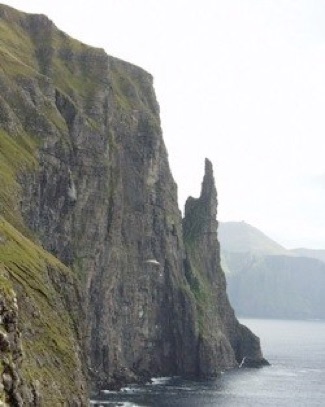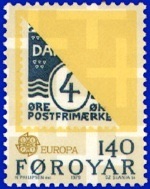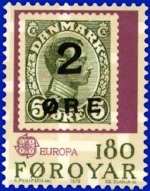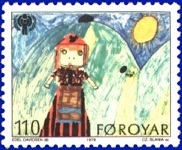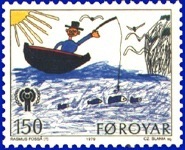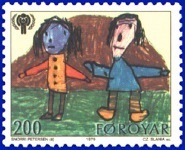My Faroe-Stamp’s collection
1976

My Faroe-Stamp’s collection
1976
1979

19th march 1979
Ram (1)

If Faroe Islands mean “Islands of Sheep”, their symbol could not be anything but a ram!

7th may 1979
EUROPA - Postal History (2i)
After the First World War, the Faroese Post Office was forced to use so-called provisional stamps. On 8 December 1918, the Post Office in Tórshavn received a message from Copenhagen about the following increase of postal rates:
inland letters on the Faroes up to 250 grain (15 g) from 5 øre to 7 øre
postcards to Denmark up to 250 grain (15 g) from 4 øre to 7 øre
The increase in postal rates came into force on 1 January 1919.
Due to unreliable shipping connections, the supply of new 7-øre postage stamps failed to reach the Post Office in Tórshavn before 1 January 1919. When it became apparent that the increase in the postal rates would bring about a heavy demand for stamps amounting to 7 øre, and that the Faroese Post Offices´ stock of supplementary stamps, 1-, 2-, 3- and 4-øre, would not be sufficient to meet demand, special provisions had to be made. Thus the Post Office in Tórshavn received authorization to bisect the ordinary 4-øre stamps and use the individual halves as 2-øre stamps.
When the stock of 4-øre stamps began to run low, the Post Office was given authorization to overprint the required number of 5-øre stamps and use them as 2-øre stamps. For this purpose a hand stamp was made out of a wooden block bearing the letters "2 ØRE". Part of a chair leg was used as handle, and therefore the stamp was called the "chair leg stamp".
Source: Wikipedia ]

1th october 1979
International Year of the Child - Drawings (3)
